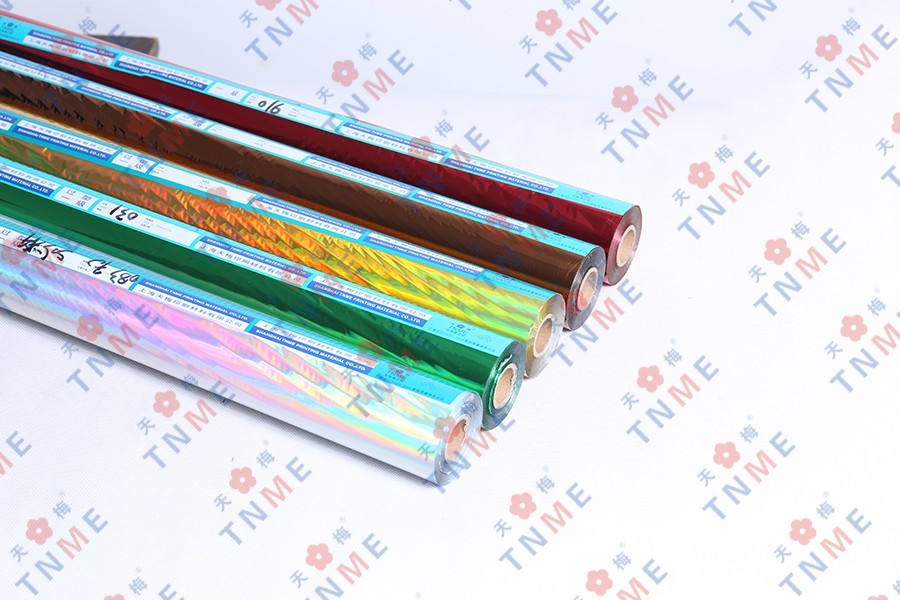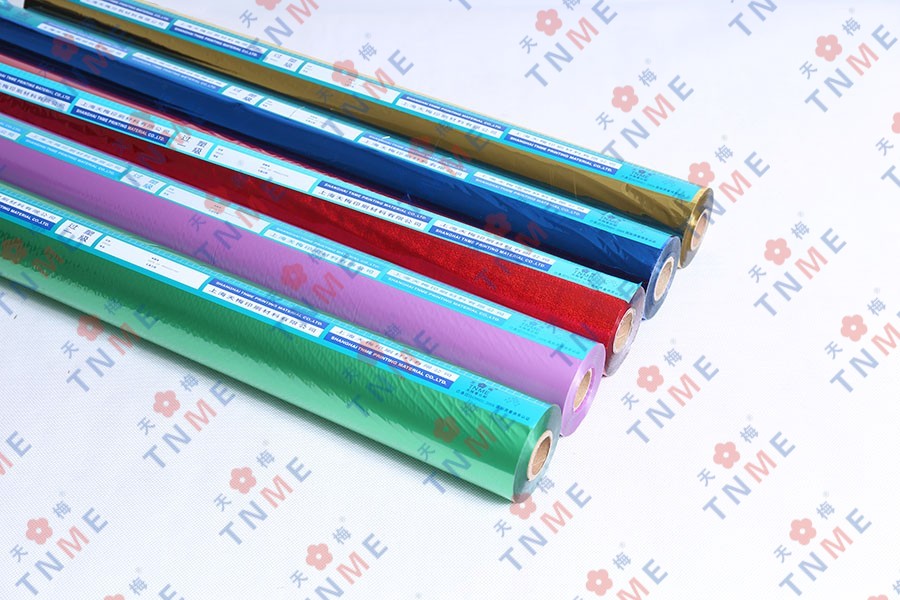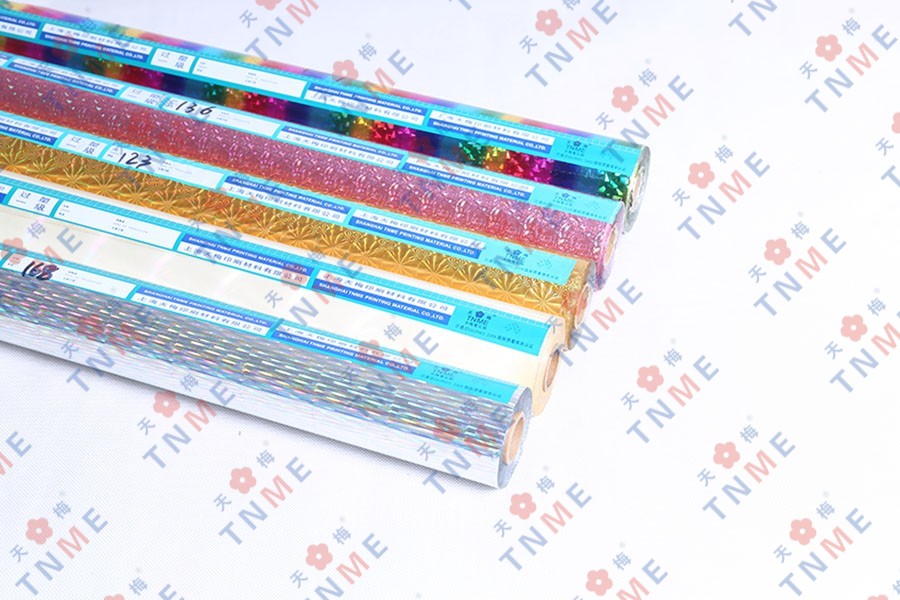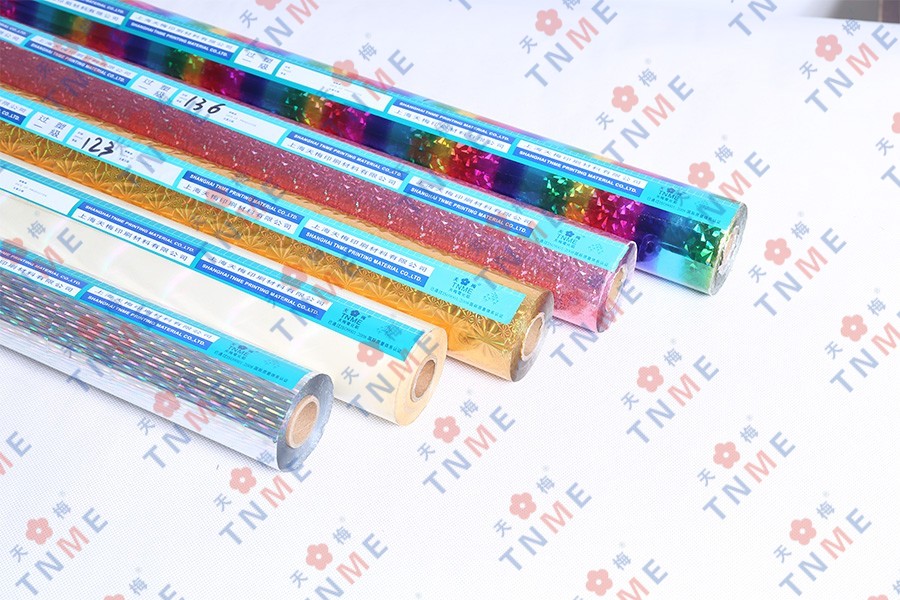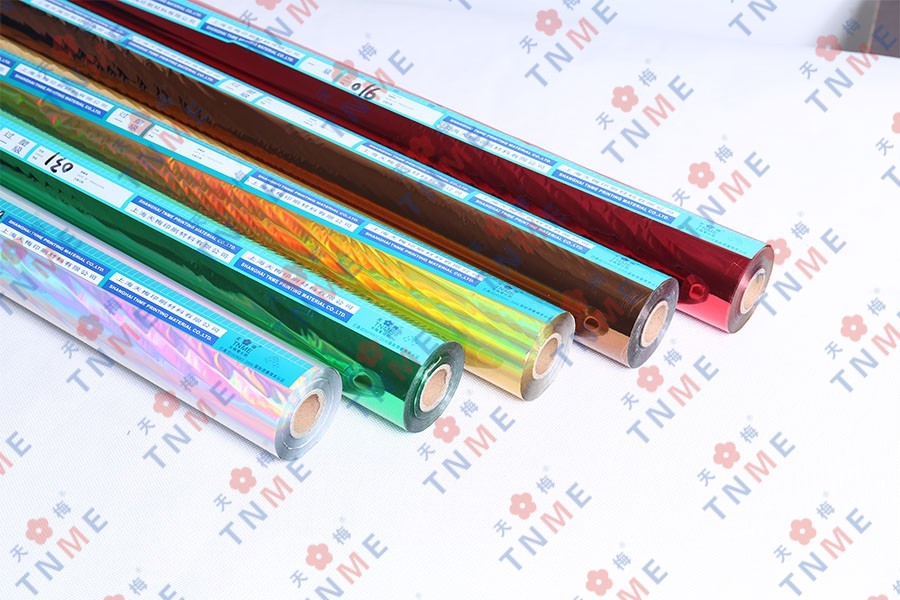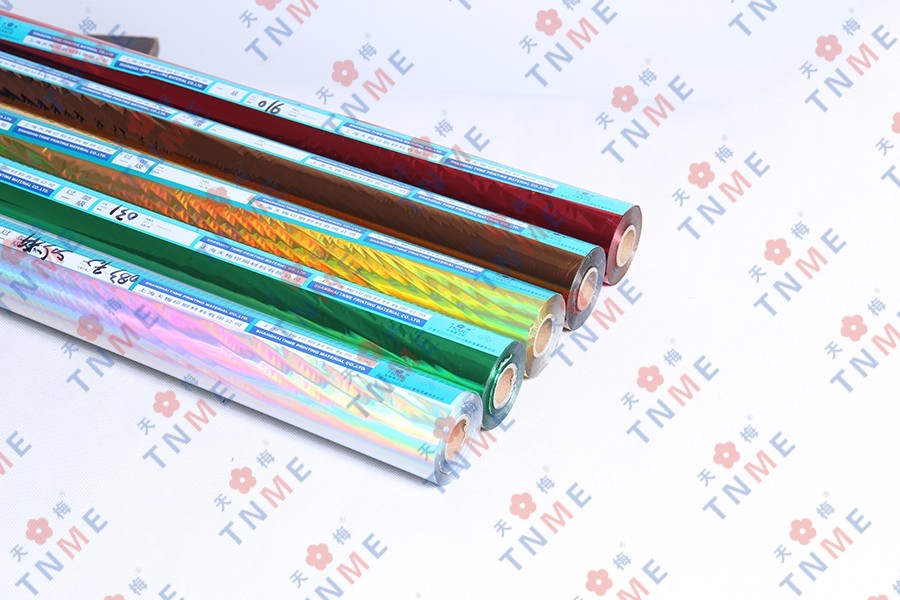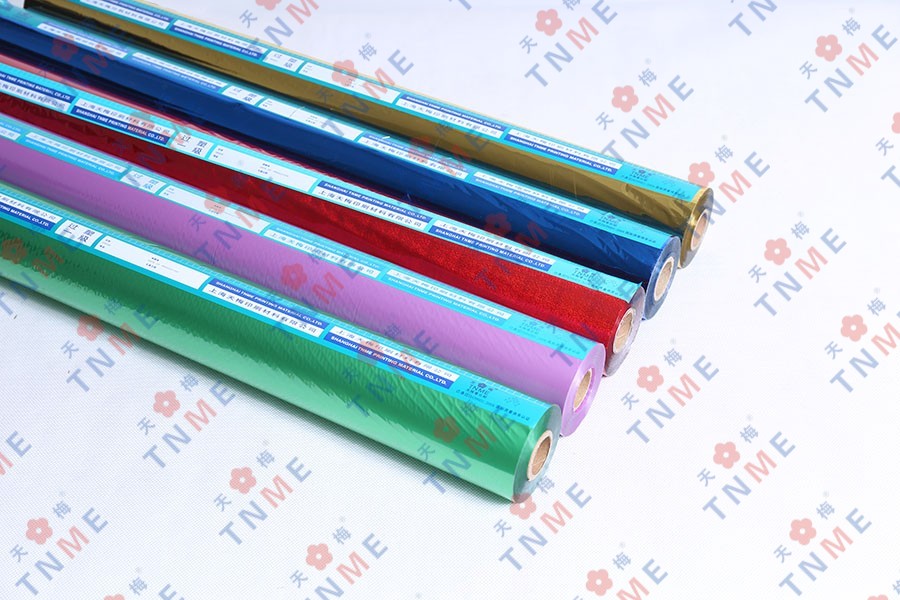Can UV Foil Be Applied on Both Flatbed and Rotary Presses?
The pursuit of elevated aesthetics and tactile experiences in print finishing has led to the widespread adoption of uv materials foil. This advanced material creates striking metallic, holographic, and pigmented effects on a vast array of substrates. A common and critical question that arises for printers and finishers investing in this technology is: Can uv foil be applied on both flatbed and rotary presses? The short answer is yes, but the implementation, considerations, and outcomes differ significantly between the two press types.
Understanding the Fundamental Process of UV Foiling
Before delving into the specifics of press types, it is essential to understand the core mechanism behind the uv foil stamping process. Unlike traditional hot stamping foil that relies solely on heat and pressure, uv materials foil requires a cured ultraviolet-reactive adhesive or varnish to act as the bonding agent. The process, therefore, is a hybrid of printing and finishing, often referred to as cold foil transfer or uv foil application.
The fundamental steps are consistent whether performed on a flatbed or rotary machine:
- Printing the UV Adhesive: A specific UV-curable adhesive is printed onto the substrate in the desired pattern using a printing plate.
- Foil Lamination: The uv materials foil is brought into direct contact with the wet, uncured adhesive layer.
- UV Curing: The substrate with the laminated foil is immediately exposed to UV light. This exposure instantly cures and hardens the adhesive.
- Foil Release: The foil carrier film is peeled away. Where the adhesive was printed and cured, the foil pigment layer remains firmly bonded to the substrate. The foil releases from all areas without adhesive.
The type of press—flatbed or rotary—dictates how these steps are executed, the speed at which they occur, and the type of projects for which they are best suited.
Application on Flatbed Presses
Flatbed presses for uv materials foil application are characterized by a flat, stationary bed that holds the substrate in place during the foiling process. A moving head, which contains the foil unwind/rewind mechanism and the UV curing lamp, travels over the substrate to complete the process.
How the Process Works on a Flatbed System
On a flatbed system, the substrate is securely positioned on the machine’s bed. The print head first applies the UV adhesive precisely onto the substrate based on the digital design. Immediately after application, the same head or a subsequent station laminates the uv materials foil onto the wet adhesive. The UV lamp, integrated into the head assembly, then passes over the laminated area, curing the adhesive. Finally, as the head continues its travel, it peels the foil carrier away, leaving the design perfectly foiled.
Advantages of Using Flatbed Presses
The flatbed approach to applying uv materials foil offers several distinct advantages that make it ideal for certain market segments.
- Unmatched Versatility in Substrate Thickness and Type: This is the most significant advantage. Flatbed presses can handle an enormous range of materials, from ultra-thin paper stocks to exceptionally thick and rigid substrates like solid board, acrylic, wood, and even certain metals. This makes them perfect for specialty packaging, point-of-sale displays, luxury packaging, and personalized gifts.
- Superior Registration Capabilities: Modern flatbed systems offer extremely high precision registration. Because the substrate is fixed and does not move during the foiling cycle, the potential for registration shift is minimized. This is critical for applications requiring tight registration to pre-printed graphics or for multi-layer foiling effects.
- Exceptional Foiling Pressure Control: The pressure applied during the lamination phase is highly controllable and evenly distributed across the entire substrate surface. This ensures consistent foil transfer, even on textured substrates or those with uneven surfaces, which is a key factor in achieving high quality foil stamping.
- Ideal for Short Runs and Prototyping: The setup process, while manual, is generally well-suited for short production runs and one-off prototype samples. There are no cylinders or endless blankets to set up, making it quicker and more cost-effective for small batches.
Limitations of Flatbed Presses
Despite their versatility, flatbed systems have inherent limitations that affect their use in high-volume production environments.
- Lower Production Speeds: The start-stop nature of the process, where the head must travel across each sheet, inherently limits production speed. Flatbed foiling is significantly slower than rotary press foiling.
- Sheet-Fed Operation: They are primarily designed for sheet-fed operation, which introduces a bottleneck in an otherwise roll-fed printing and finishing line.
- Higher Per-Unit Cost for Long Runs: The slower speeds make the per-unit cost less competitive for very long print runs compared to rotary systems.
Application on Rotary Presses
Rotary presses, also known as web presses, operate on a continuous principle where both the substrate and the uv materials foil are moving at high speed between rotating cylinders.
How the Process Works on a Rotary System
In a rotary uv foil stamping setup, the substrate is typically on a roll (web-fed). The process is in-line and continuous. A printing cylinder first applies the UV adhesive pattern onto the moving web. Downstream, a specially designed foil laminator unit brings the uv materials foil into contact with the substrate under pressure, ensured by a nip roller. A UV curing lamp, positioned immediately after the lamination point, instantly cures the adhesive. A short distance after curing, the foil carrier web is peeled away from the substrate and rewound, while the now-foiled substrate continues through the press for further processing or finishing.
Advantages of Using Rotary Presses
Rotary application is the engine of high-volume uv materials foil production, offering compelling advantages for large-scale operations.
- Exceptionally High Production Speeds: This is the primary benefit. Rotary presses can run at speeds compatible with modern web offset, flexographic, and gravure presses, often exceeding hundreds of feet per minute. This makes them the only viable option for high-volume production of items like labels, flexible packaging, and cartons.
- In-Line, Web-Fed Integration: Rotary uv foil application units are designed to be integrated directly into existing web-fed printing presses. This allows for foiling to be completed in a single pass alongside printing, varnishing, and die-cutting, dramatically reducing production time, labor costs, and handling.
- Lower Cost-Per-Unit for Long Runs: The high-speed, continuous nature of rotary processing drastically reduces the cost per finished item for long production runs, offering superior economies of scale.
- Consistent Operation: Once the press is set up and running, the continuous motion provides very consistent and uniform results across the entire production roll.
Limitations of Rotary Presses
The efficiency of rotary systems comes with trade-offs in flexibility.
- Substrate Limitations: Rotary systems are generally limited to flexible, web-fed substrates. They cannot process rigid, thick, or pre-die-cut materials that are common in high-end packaging. The substrate must be able to wrap around a cylinder and withstand web tension.
- Challenges with Registration: Maintaining perfect registration on a high-speed web can be more challenging than on a static flatbed. Tension control, web steering, and press stability become critical factors to prevent registration drift, especially over long runs.
- Higher Initial Investment and Setup Time: The machinery itself is a significant capital investment. Furthermore, the setup for a new job on a web press, including mounting plates and setting up the foil unit, can be more complex and time-consuming than on a flatbed, making it less suitable for very short runs.
Key Comparative Factors: Flatbed vs. Rotary
To decisively answer the central question, one must compare the two press types across several operational dimensions. The following table summarizes the critical differences:
| Factor | Flatbed Presses | Rotary Presses |
|---|---|---|
| Principle of Operation | Intermittent (sheet-fed, start-stop) | Continuous (web-fed, constant motion) |
| Ideal Application | Short to medium runs, prototyping, thick/rigid materials | Very long runs, high-volume production, flexible materials |
| Production Speed | Slow to Moderate | Very High |
| Substrate Versatility | Extremely High (paper, board, plastic, wood, etc.) | Limited (flexible, roll-fed materials only) |
| Registration Accuracy | Typically Superior (substrate is stationary) | Very Good, but can be affected by web tension and stability |
| Cost-Effectiveness | Better for short runs | Better for long runs |
| Integration | Typically a standalone, offline process | Can be integrated in-line with web printing presses |
Critical Considerations for Successful Application on Either Press
Regardless of the press type chosen, achieving high-quality results with uv materials foil depends on meticulously controlling several variables.
Adhesive Selection and Application: The choice of UV adhesive is paramount. Its viscosity, reactivity, and affinity for both the substrate and the foil release layer must be precisely matched to the job. The adhesive must be applied with the correct thickness and sharpness of detail. An uneven or incorrectly formulated adhesive layer will result in poor foil transfer, seen as pinholes or incomplete areas.
UV Curing Energy: The UV lamp must provide the exact spectral output and energy (measured in joules per square centimeter) required to fully cure the adhesive layer instantly. Under-curing will cause the adhesive to remain tacky and not release the foil cleanly, leading to a messy transfer. Over-curing can potentially degrade the adhesive or the substrate.
Foil Tension and Alignment: Proper control of the uv materials foil web tension is critical on both press types, but it is a dynamic and constant variable on rotary machines. Incorrect tension can cause wrinkling, misregistration, or web breaks. Precise alignment of the foil to the printed adhesive pattern is equally essential.
Substrate Surface Energy and Porosity: The substrate must have a sufficiently high surface energy to allow the wet UV adhesive to coat it evenly and adhere properly. Absorbent or porous substrates may require a primer or a base coat to prevent the adhesive from soaking in, which would starve the bond to the foil.
Nip Pressure (Rotary) and Head Pressure (Flatbed): The pressure applied during the lamination phase must be sufficient to ensure perfect contact between the foil and the adhesive across the entire image area without crushing the substrate or causing distortion.




 English
English 中文简体
中文简体
